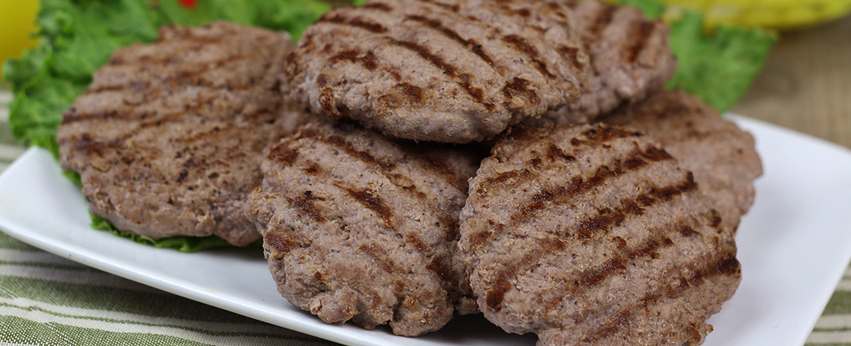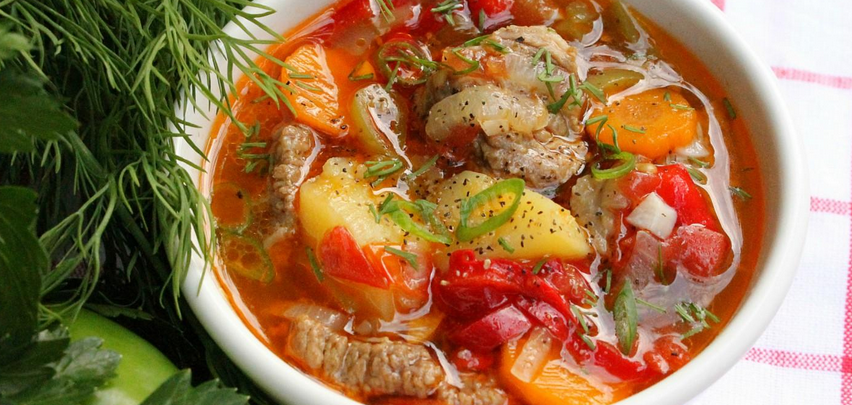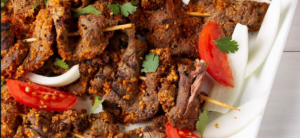Deep Flavor, Low Effort: My Go-To Beef Short Ribs Slow Cooker Recipe

As a chef, I’ve spent years refining sauces, balancing textures, and plating food like artwork. But when I’m home, nothing satisfies quite like a batch of slow-cooked beef short ribs. They’re rustic, rich, and require more patience than precision—which makes them one of the best dishes to let your slow cooker shine.
- Choosing the Right Short Ribs for Slow Cooking
- Essential Ingredients for Flavor That Builds All Day
- Slow Cooking Process That Builds Deep Flavor
- Other Cooking Methods That Work for Beef Short Ribs
- Cooking Time and Method Comparison Table
- Side Dishes and First Course Ideas
- Variations That Take This Dish in New Directions
- How I Serve These Ribs for Casual Dinners and Fancy Occasions
- Leftovers Worth Repeating (and Reinventing)
- Mistakes I’ve Made (So You Don’t Have To)
- Why This Recipe Made It Into My Permanent Home Menu
- Kid-Friendly Adjustments Without Losing Depth
- Tips on Buying, Prepping, and Storing Short Ribs
- Flavor Combos That Surprised Even Me
- Why Short Ribs Will Always Be a Chef’s Favorite Cut
- The Chef’s Philosophy: Letting Time Do the Work
- FAQ

Choosing the Right Short Ribs for Slow Cooking
Short ribs come in two main cuts: English-style and flanken-style. English cut has a single bone with a thick slab of meat on top—it’s what I use for long, slow braises because it holds its shape and turns silky when cooked low and slow. Flanken is cross-cut across several bones and cooks faster, great for Korean BBQ or grilling.
For the slow cooker, I recommend English cut. Ask your butcher for meaty pieces with good marbling. If the fat’s too thick, trim it down, but don’t remove it all—some fat is key to that luscious final texture.
This dish shares a lot of DNA with corned beef brisket in the slow cooker where low heat turns tough meat into something incredible.
Essential Ingredients for Flavor That Builds All Day
You don’t need 20 ingredients for great short ribs. But you do need the right ones. Here’s what I use almost every time, whether I’m cooking for family or prepping for a pop-up dinner:
- 3–4 pounds beef short ribs (bone-in, English cut)
- Kosher salt and freshly cracked black pepper
- 1 large yellow onion, sliced
- 3–4 cloves garlic, smashed
- 2 carrots, roughly chopped
- 1 tablespoon tomato paste
- 1½ cups dry red wine (Cabernet or Syrah work well)
- 2 cups beef stock or bone broth
- 2 tablespoons Worcestershire sauce
- 2 sprigs rosemary, 2 sprigs thyme
- Optional: bay leaf, balsamic splash, or a few mushrooms for umami
Salt and sear the ribs in a hot skillet until browned—this adds rich base flavor. Then transfer them to the slow cooker along with the veggies and liquids.
Slow Cooking Process That Builds Deep Flavor
This dish is about layering—aromatics, seared meat, deglazing, then time. After searing, I use a splash of wine to deglaze the skillet, scraping up the fond (that caramelized brown stuff at the bottom), and pour that into the cooker too. Don’t skip this—it’s liquid gold.
Layer the onions and carrots on the bottom, ribs on top, and pour the wine, broth, and seasonings over everything. I set it to low for 8 hours. Around hour 6, the aroma alone will make you hungry.
If I want the sauce thicker, I remove the ribs at the end and reduce the liquid in a pan on the stove until glossy. You can also whisk in a little cornstarch slurry or butter to finish.

Other Cooking Methods That Work for Beef Short Ribs
While the slow cooker is my favorite for hands-off tenderness, I’ve tested every method in the book—because sometimes time, space, or mood calls for a different approach.
In the oven, I braise ribs in a Dutch oven at 300°F for about 3 hours, tightly covered. That method gives you a great reduction and slightly crispier edges if you finish uncovered for the last 20 minutes. On the stovetop, you’ll need to keep a close eye on liquid levels, but it gets the job done in the same time frame.
If you’re in a rush, the pressure cooker (Instant Pot) is your friend. I cook on high pressure for about 45 minutes, then natural release for 15. The results are fall-apart tender and great for pulling into sandwiches or tacos.
The microwave? Not for cooking—but for reheating leftovers with broth and a lid, it works well.
If you’re already familiar with slow cook beef ribs in crock pot, this dish will feel like a sibling in both process and comfort.
Cooking Time and Method Comparison Table
Here’s the cheat sheet I use when training junior cooks or writing prep lists for events. These methods all work—they just suit different kitchen setups and goals.
| Method | Temp / Setting | Time | Notes |
| Slow Cooker (Low) | ~200°F / 93°C | 8–9 hours | Best for flavor, texture, and convenience |
| Slow Cooker (High) | ~300°F / 149°C | 4–5 hours | Good if you’re short on time, but slightly less rich |
| Dutch Oven (Oven) | 300°F / 149°C | 2.5–3.5 hours | Classic braise, deeply flavorful, finish uncovered for texture |
| Pressure Cooker | High Pressure | 45 min + 15 min NR | Fastest method; ideal for shredding |
| Sous Vide | 160°F / 71°C | 24–36 hours | Incredible tenderness, but time-intensive |
| Microwave (Reheating) | Medium Power | 2–3 minutes | Use only for leftovers; add broth or sauce and cover |

Side Dishes and First Course Ideas
Beef short ribs are rich—so balance is key when choosing your sides. For mains, I love creamy mashed potatoes, buttered polenta, or garlic rice as the base. Roasted root vegetables or wilted greens (chard, kale, mustard) work perfectly for contrast.
For a first course, you can get creative. I’ve shredded short rib meat into arancini (risotto balls), made ravioli stuffed with short rib and mascarpone, and even used it in a mini Yorkshire pudding with horseradish cream. It also makes a stunning topping for a thick winter soup or salad with bitter greens and mustard vinaigrette.
The richness invites contrast—acid, crunch, or freshness.
Variations That Take This Dish in New Directions
Once you’ve mastered the base recipe, there’s room to riff. One of my favorites: Korean-style short ribs. Swap the wine and herbs for soy sauce, sesame oil, gochujang, brown sugar, garlic, and ginger. Add scallions and serve with rice and kimchi.
Another variation? Red wine and espresso. The coffee deepens the flavor and gives it a roasty complexity that hits differently. For a more Mediterranean profile, I swap the wine for crushed tomatoes, add rosemary and olives, and serve it over creamy polenta with lemon zest.
And if you’re a fan of organ meats, I’ve even done a beef heart and short rib blend braise—yes, it works. The boldness of beef heart balances the gelatinous richness of the ribs beautifully
How I Serve These Ribs for Casual Dinners and Fancy Occasions
Beef short ribs are one of those rare cuts that work for both Tuesday night and Saturday soiréе. When it’s a casual family meal, I go classic: pile the ribs over mashed potatoes, spoon the reduced sauce over the top, and throw on some chopped herbs.
But when I’m plating for guests or a private dinner? I slice the rib off the bone after it cools slightly, reheat gently, and serve it atop creamy cauliflower purée with a red wine reduction and crispy shallots. Add a green like charred broccolini or shaved fennel salad, and you’ve got a restaurant-level plate in your home kitchen.
Garnishes matter. A sprinkle of flaky sea salt or lemon zest at the finish makes all the difference.
Leftovers Worth Repeating (and Reinventing)
On the second day, these ribs might be even better. The flavors settle and deepen overnight. I often shred the leftover meat and toss it into pasta with butter and herbs, or reheat it and layer into a sandwich with sharp cheddar and caramelized onions.
One of my favorites? Short rib tacos with pickled onions and chipotle aioli. Another? Stirring the meat into creamy grits with wilted spinach for a warm, rich brunch bowl.
If you freeze it, save a bit of the braising liquid—it helps rehydrate and revive the richness when reheating.

Mistakes I’ve Made (So You Don’t Have To)
I’ve learned a lot by messing this dish up. Here’s what to avoid.
Don’t crowd the slow cooker—if the ribs are packed too tightly, they steam instead of braise. Leave space between the bones. Don’t skip the sear. I tried once to make this a true dump-and-go recipe… and regretted it when the flavor came out flat. A hot pan and browned meat build your foundation.
And don’t forget to reduce your sauce. Straight from the slow cooker, the liquid is usually too thin. I remove the ribs, strain the sauce, and reduce it on the stove. Sometimes I even add a little Dijon or balsamic at the end to brighten it.
Why This Recipe Made It Into My Permanent Home Menu
I’ve cooked a lot of slow braises. Some fade away after one good meal. But this one stuck. It hits all the right notes: rich, hearty, comforting—but with enough structure to dress up when needed.
It’s also reliable. Whether I’m feeding my family, prepping for a make-ahead dinner, or throwing something into the crock pot before a long shift, I know what I’ll come home to. Short ribs deliver, every time.
And the beauty of it? You can make it your own. Once you know the base, it becomes a blank canvas for your favorite seasonings, wines, and sides.
Kid-Friendly Adjustments Without Losing Depth
Cooking for kids doesn’t mean watering down your flavor—it just means smart balancing. I’ve served short ribs to enough families to know that the key is removing anything too sharp, bitter, or boozy.
In my kitchen, I skip the wine and instead use a combination of beef broth, a small spoonful of tomato paste, and a splash of apple juice or maple syrup. This keeps the sauce rich and mellow without being overwhelming. I also hold back the black pepper and rosemary—kids often reject those strong, herbal notes.
Then I shred the meat and fold it into cheesy mashed potatoes or layer it into sliders with a touch of sweet BBQ sauce. One time I even turned it into short rib quesadillas with mild cheddar—and they disappeared faster than chicken nuggets.
Short ribs can absolutely be kid food. Just lead with sweetness, softness, and familiar textures.

Tips on Buying, Prepping, and Storing Short Ribs
I’ve been burned by bad short ribs before—overly fatty, cut too thin, or inconsistently butchered. Now I always go to a trusted butcher and ask for meaty, English-cut ribs with even bone length and decent marbling. Avoid ribs that are mostly fat or have small, jagged bones poking through.
At home, I pat the ribs dry before searing to get that perfect crust. I also bring them to room temp before they hit the pan—cold meat steams, not browns. If I’m prepping ahead, I salt them the night before and store them uncovered in the fridge. That gives me a dry surface and deep flavor from the start.
For storage, I always keep cooked ribs submerged in their braising liquid. They last up to four days in the fridge and freeze incredibly well if vacuum sealed or stored in a heavy container with sauce. Reheat gently, and they’ll taste just as good—maybe even better.
Flavor Combos That Surprised Even Me
After years of making short ribs, I’ve come across some unexpected twists that now live rent-free in my rotation.
One of the most surprising? Adding a square of 85% dark chocolate to the pot near the end of cooking. It doesn’t make the dish taste sweet—it just brings out the richness and adds a smoky, cocoa depth that pairs especially well with red wine and rosemary.
Another one: a tablespoon of miso paste stirred into the sauce once it’s reduced. That umami kick levels up everything else. And don’t overlook brightness—fresh lemon zest or grated horseradish added at the very end wakes up the entire plate.
I’ve also finished short ribs with a splash of sherry vinegar and chopped tarragon. The acidity and anise-like sharpness cut through the richness beautifully. Cooking is part instinct, part curiosity—and this dish rewards both.
Why Short Ribs Will Always Be a Chef’s Favorite Cut
Some ingredients are just built for transformation. Short ribs are one of those cuts that remind me why I fell in love with slow food in the first place. Raw, they’re rough, fatty, and overlooked. But with time, heat, and seasoning, they become silk. That’s kitchen magic.
They’re also wildly flexible. I’ve plated short ribs over parsnip purée at weddings, folded them into French onion soup for a food truck menu, and layered them over rice at home with just butter and black pepper. No matter the setting, they shine.
But above all, they represent value. They’re affordable, they stretch far, and they impress even the pickiest guests. When cooked right, short ribs prove that technique matters more than price tag—and that great food doesn’t need to be flashy.
The Chef’s Philosophy: Letting Time Do the Work
I’ve worked in kitchens where we rushed everything—flash cooking, speed plating, time hacks. And while that has its place, slow cooking short ribs reminds me of a more honest rhythm. You can’t cheat braising. You can’t fake tenderness.
There’s something sacred about letting the pot do its work while you live your life. Whether it’s simmering while you write, walk the dog, or catch up on rest, slow cooking rewards you with something you didn’t have to babysit—but still made with care.
This dish isn’t just about beef—it’s about intention. You season, sear, cover, and trust the process. And when you lift that lid eight hours later and the aroma hits your face? That’s when you remember why slow food is worth it.
FAQ
Do I need to sear the ribs before slow cooking?
In my experience, yes. I’ve tried it both ways, and searing adds depth and complexity that slow cooking alone can’t achieve. A good hard sear creates a caramelized crust that enriches the whole dish.
Can I cook short ribs from frozen in the slow cooker?
I don’t recommend it. From my own kitchen tests, frozen ribs release too much water early on and don’t cook evenly. Thaw them in the fridge overnight for best results and consistent texture.
How much liquid should I use in the crock pot?
I’ve found that just enough to come halfway up the ribs is perfect. Short ribs release a lot of their own fat and juices, so too much liquid waters down the flavor.
Can I skip the wine?
Absolutely. I’ve made wine-free versions using beef broth, balsamic vinegar, and a splash of apple juice or pomegranate molasses. It’s different, but still fantastic—just go easy on sugar.
Should I remove the fat cap or silver skin before cooking?
From my own prep routine, I trim only excess fat. The marbling is what gives you that fall-apart richness. Just avoid large exterior globs that won’t render during cooking.
How do I thicken the sauce at the end?
I usually remove the cooked ribs, strain the liquid, and simmer it on the stovetop to reduce by half. You can also stir in a cornstarch slurry or swirl in cold butter for shine and body.
Are short ribs better on the bone or boneless?
Bone-in, hands down. I’ve cooked both, and the bones add richness and depth to the sauce. Boneless works for convenience, but it loses that extra soul.
Can I cook them on high instead of low?
I’ve done it plenty of times when pressed for time. They’re good after 4–5 hours on high—but they’re great after 8 on low. If you’ve got time, go slow.
How do I know when they’re done?
In my experience, if a fork glides in without resistance and the meat is nearly falling off the bone, you’re there. Internal temp can read 195–205°F, but texture is your best guide.
Can I reheat leftovers without drying them out?
Yes. I always store the meat in its braising liquid. Reheat gently on the stovetop or in the oven at 300°F, covered. Add a splash of broth if needed to loosen the sauce.
What should I serve with short ribs?
From my own rotation: mashed potatoes, buttery polenta, wild rice, or crusty bread. For vegetables, I go with garlicky greens, roasted carrots, or glazed parsnips. Keep it hearty and simple.
Do they freeze well?
Very well. I freeze the ribs in individual portions with sauce. They defrost overnight in the fridge and reheat beautifully. Just avoid freezing in thin containers—the meat can dry out.
Can I make this dish a day ahead?
Absolutely—and I recommend it. Short ribs taste better the next day. I chill them in the sauce, skim the fat, and reheat gently. It’s easier and more flavorful.
What wine works best for cooking short ribs?
I’ve used Cabernet, Syrah, and even Tempranillo. Go for something dry and bold. Don’t use anything too tannic or too cheap—if you wouldn’t sip it, don’t cook with it.
How can I make it more kid-friendly?
I swap out the wine, skip the herbs like rosemary, and go with beef broth, a little tomato paste, and honey for sweetness. Served shredded over noodles or rice, kids love it.




Post Comment